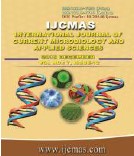


 National Academy of Agricultural Sciences (NAAS)
National Academy of Agricultural Sciences (NAAS)

|
PRINT ISSN : 2319-7692
Online ISSN : 2319-7706 Issues : 12 per year Publisher : Excellent Publishers Email : editorijcmas@gmail.com / submit@ijcmas.com Editor-in-chief: Dr.M.Prakash Index Copernicus ICV 2018: 95.39 NAAS RATING 2020: 5.38 |
Spatial (picture) Intelligence adheres particularly to the capacity to process information through visualization. Children who favor a spatial intelligence lean to discover through visual aids and images and individuals with strong spatial intelligence will gravitate towards artistic and highly visual forms of learning. Visual artists and interior designers illustrate creative spatial abilities and a flourishing architect will necessitate both the creative abilities as well as technical achievement. Ecological Systems Theory proposed by Urie Bronfenbrenner emphasized that there are five layers arranged from the closest to the individual to the farthest: the microsystem, mesosystem, exosystem, macrosystem and chronosystem. These all systems directly or indirectly influence the individual growth and development. Hence, the association of these variables was studied along with Multiple Intelligence of the young adolescents. For this, 200 respondents in the age group of 12-14 years from both urban and rural area of Mahendergarh district of Haryana state were selected. Cultural setting and membership of any club/organization by the respondents’ and their parents were significantly associated with visual spatial intelligence. Neither relationship nor interaction of the respondents with the neighbors had any significant association with visual spatial intelligence. It is clear from the research that the other variables had no significant association with visual spatial intelligences of the respondents.
 |
 |
 |
 |
 |